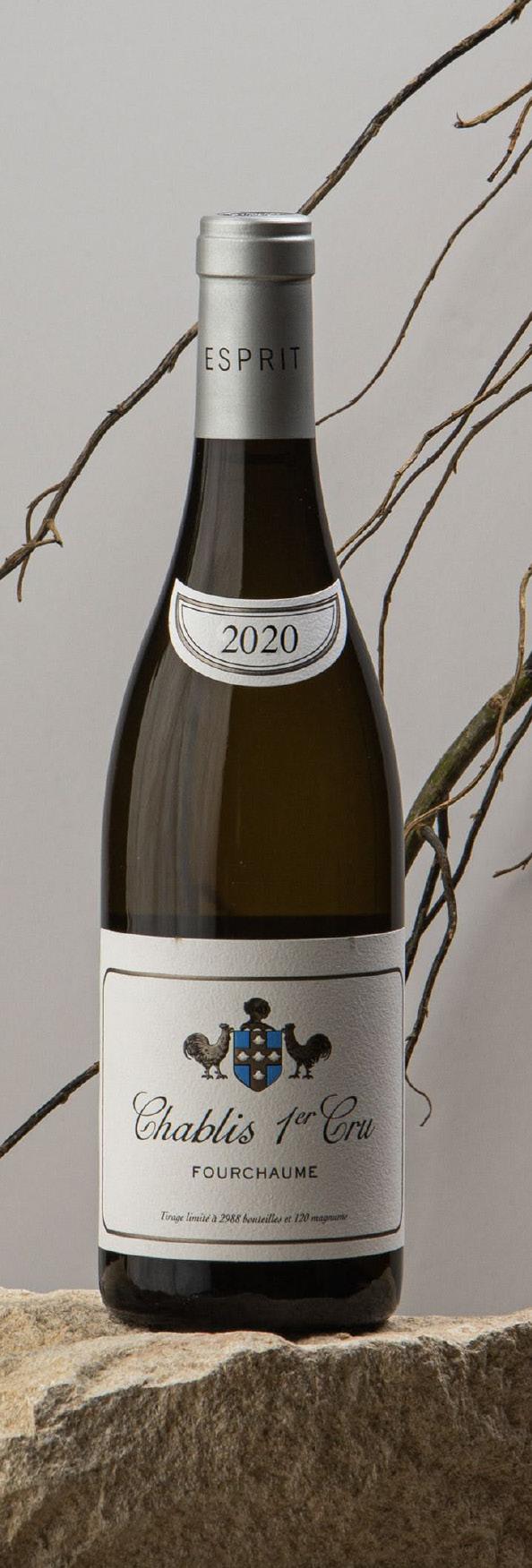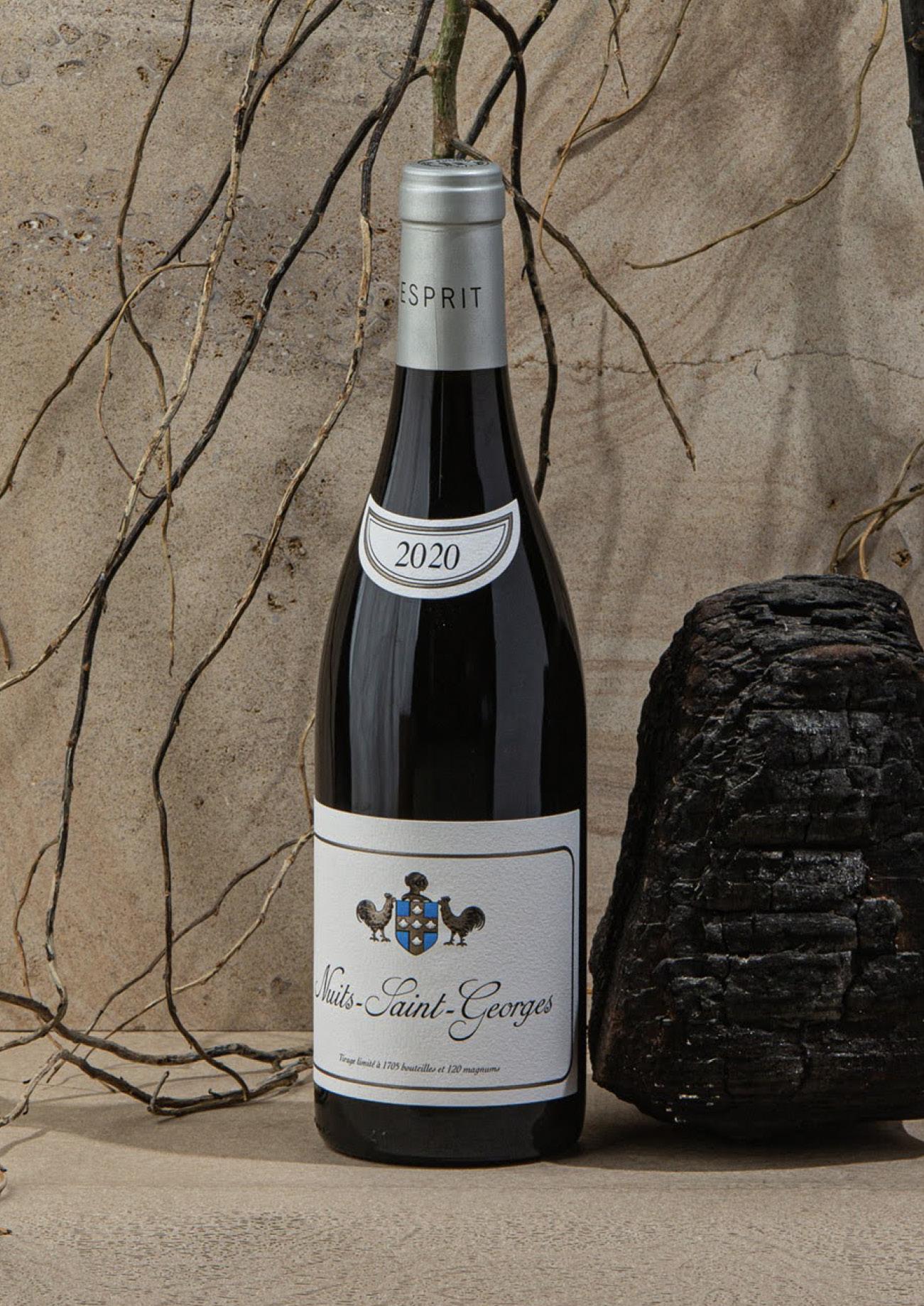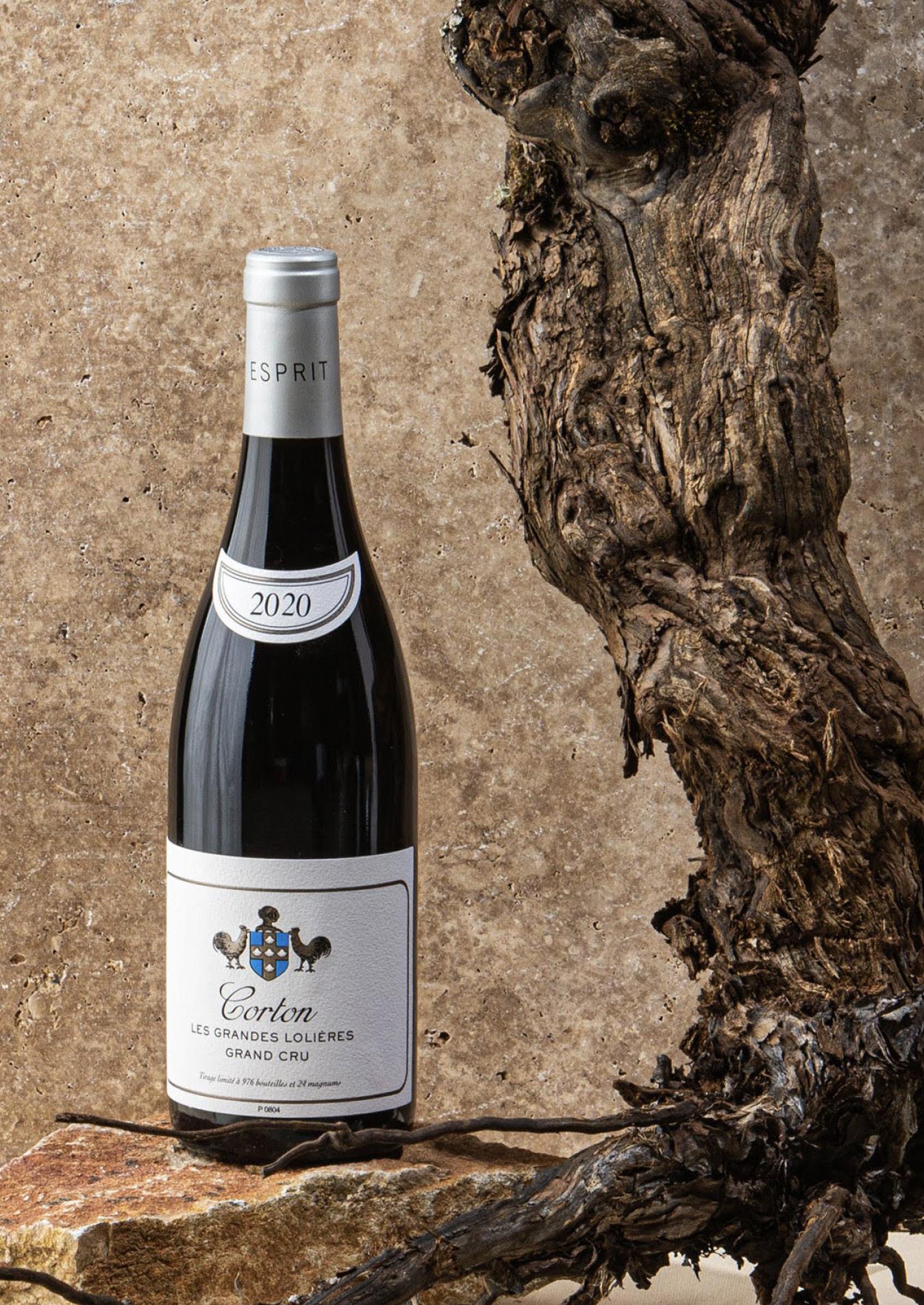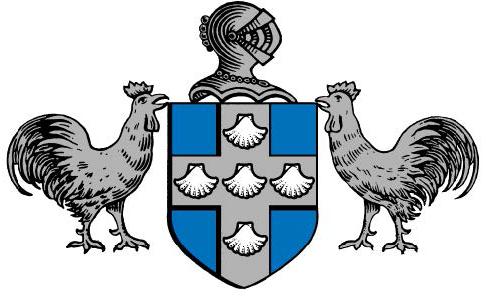
« Au croisement des terroirs de Bourgogne est né Esprit Leflaive. »
“Esprit Leflaive was born at the crossroads of the terroirs of Burgundy.”
PIERRE VINCENT





« Au croisement des terroirs de Bourgogne est né Esprit Leflaive. »
“Esprit Leflaive was born at the crossroads of the terroirs of Burgundy.”
PIERRE VINCENT



The 2020 vintage is the third of this exciting Leflaive venture, which sees Brice de La Morandière, head of Domaine Leflaive, join forces with Pierre Vincent, Leflaive’s winemaker from 2017 to 2024. Esprit Leflaive pushes beyond the Leflaive heartland of the Côte de Beaune and Mâconnais, into the Côte de Nuits and Chablis.
Although Leflaive is no stranger to innovation, what sets Esprit Leflaive apart is its uncompromising reach for the very highest level, drawing on close relationships with its network of vigneron partners, all of whom cultivate organically. The wines are made in the ‘spirit of Leflaive’.
This is not an en primeur release, the wines having already embarked on their development in bottle, allowing them to be offered with a degree of maturity and, in some cases, ready for immediate drinking. As Brice says, “Bottling takes place after two years of ageing. We then keep them for another 18 months in our cellars so that they develop peacefully before they reach their fans.”
From the grands crus Corton-Charlemagne and Corton Les Grandes Lolières, to premier cru Chablis, Pommard and Beaune, to the duo from Pouilly-Fuissé, there is so much to like here. Leflaive Pinot Noir is still a novelty I get (overly?) excited about, but for those seeking Chardonnay made in the image of Puligny, you needn’t look far.
2020 is a joyful vintage of flavour and matter. The hot summer was tempered by water in the soil and cool nights, making for characterful wines of classical proportions. They will drink early but will reward the patient. I commend them to you enthusiastically!
GUY SEDDON HEAD OF FINE WINE BUYING NOVEMBER 2024
The summer of 2020 was warm, not to say hot. Yet this is by no means a ‘solar’ or overly fruity vintage. There is certainly richness and structure, but there is poise too.
Three key factors in the 2020 season were:
• saturated soils, thanks to a rainy winter, which eased the vines through the dry summer;
• the absence of summer heat spikes; and
• cool nights, which moderated the sugar levels.
The scene was set by a mild and rainy autumn and winter, which allowed the water tables to recover quickly after the dry 2019 summer. Spring started early, with a sunny March and April. Strong, sustained winds kept the vineyards healthy.
Flowering, which culminated in late May, took place in optimally warm, dry conditions. It has been widely reported that the 2020 Burgundy harvest was uncommonly early. However, the growing season was close to the traditional 100-day norm.
A rainy and cool June re-hydrated the soils before the hot, dry summer set in. This consistency of heat is a point of difference with 2019, which saw more heat spikes.
The period from 8th to 15th August 2020 saw sustained temperatures in the mid-30s, contrasting with peaks of over 40°C in 2019.
Thanks to this summer heat, harvest started even earlier than initially predicted. The habitual ‘saving rains’ of early August fell in the Côte de Beaune as a sprinkling, on 17th August and then more generously on the 22nd, at the start of picking.
Harvest started in the third week of August. Pierre Vincent praised the “superb condition” of the grapes, “with lots of juice and lovely fruity aromas.” Brice de La Morandière modestly concedes that 2020 “surprised us both by its quality and by its generosity.”
There is a certain irony that the year of Covid lockdowns, when growers were unable to travel, saw a season in which everything went right in the vineyards, requiring relatively little input (other than the all-important choice of picking date). Perhaps unsurprisingly under such conditions, the wines are beautiful.
In a subtle nod to its heritage, the gunmetal grey-blue Esprit Leflaive crest is a mirror image of Domaine Leflaive’s. The capsules follow the same colour scheme. Using the WID app, you can scan the Esprit Leflaive labels and cases to reveal information about the wines.

Our tasting notes provide full details but, at your request, we have also introduced a clear and simple marking system. We hope these guidelines assist you in your selection. For the benefit of simplicity, wines are scored out of 20. We will often use a range of scores (e.g. 16.5 to 17) to indicate the potential to achieve a higher mark. When a ‘+’ is shown it adds further to that potential. Wines from lesser vintages will, inevitably, show a lower overall score.
Wines are judged, in a very broad sense, against their peers. Why? Well, you cannot easily compare a Ford with an Aston Martin, other than they are both cars and have wheels. It is not that different with wine. A score is a summary only. The devil is in the detail, so please focus on the tasting notes and, as always, speak to our sales team.
The Esprit Leflaive whites are an eclectic bunch, unified by a thread of quality- and terroir-driven winemaking –a search for excellence throughout the region. From a team that is responsible for some of the most soughtafter Chardonnays in the world, this makes for an exciting project.
Planted in 1970, this 0.43-hectare plot of the admired Chablis premier cru Fourchaume is southwest-facing, with deep clay-limestone Kimmeridgian soils. Wet-stone minerality upfront opens onto a more flamboyant palate of citrus zest and grapefruit. Fermented in stainless steel, then racked after the malolactic conversion into a concrete egg and a 600L oak vat. 13% abv.
Corney & Barrow Score 17 +
Recommended drinking from 2025 - 2030
£495/Case of 6 bottles, in bond UK
£520/Case of 3 magnums, in bond UK
This is the second vintage of this wine. The higherelevation village of Saint-Romain, in the hills above Meursault, is a fast-emerging appellation. Sous la Velle sits at around 370 metres above sea level, facing east. A lovely bright, flinty-cedary nose leads into a fleshy palate of creamy stone-fruit. Lush and quite seductive, with delicate patisserie on the end. 13% abv.
Corney & Barrow Score 17.5
Recommended drinking from 2024 - 2030
£419/Case of 6 bottles, in bond UK
£444/Case of 3 magnums, in bond UK

This comes from two clay-limestone plots in Chaintré, in the south of the Pouilly-Fuissé appellation, totalling 0.98 hectares. The vines here were originally planted in 1951. This is rich and apricot-fruited on the nose, opening onto a tighter palate of salty minerality with fresh supporting acidity. An exciting bottling – this is a pick. Vinified in large old oak foudres, followed by a year’s ageing in oak and six months in stainless steel vats. 13% abv.
Corney & Barrow Score 17.5 - 18
Recommended drinking from 2024 - 2028
£399/Case of 6 bottles, in bond UK
£424/Case of 3 magnums, in bond UK
This single-vineyard Pouilly-Fuissé comes from a 1.12 hectare east-facing, early ripening plot in Chaintré, planted in 1950. As of this 2020 vintage, it is a premier cru. Bright golden colour. The nose offers yellow flower perfume, leading into a palate of delectable yellow peach, with notes of almond and marzipan. Aged for one year in oak barrels (15% new) then six months in stainless steel vats. 13% abv.
Corney & Barrow Score 17 – 17.5+
Recommended drinking from 2025 - 2029
£505/Case of 6 bottles, in bond UK
£530/Case of 3 magnums, in bond UK
This comes from the commune of Vergisson, to the north of Solutré-Pouilly. Yellow flower perfume again here, leading into a fleshy, succulent palate which retains a core of acid tension. This is more incisive than Clos Reyssier, with wonderful immediacy and stony minerality. Aged for one year in oak barrels (15% new) then six months in stainless steel vats. 13% abv.
Corney & Barrow Score 17.5
Recommended drinking from 2025 - 2029
£505/Case of 6 bottles, in bond UK
£530/Case of 3 magnums, in bond UK
This 0.43-hectare plot faces northeast, towards the hill of Corton. Pale lemon-gold colour. A nose of white flowers and white peach leads into a very fine palate of verve and clarity. The finish is long and focussed. Very impressive. Aged for one year in oak barrels (15-20% new) with a further six months in stainless steel vats. 13% abv.
Corney & Barrow Score 17.5
Recommended drinking from 2024 - 2029
£639/Case of 6 bottles, in bond UK
£664/Case of 3 magnums, in bond UK
Planted in 1993, this tiny southeast-facing plot is 0.11 hectares in size, producing just one barrel. Soils are Jurassic marl, silt and limestone. White flower perfume and a palate of beautiful tension – taut white peach fruit delineated by friable chalky minerality. Rich, driving and nervy. Aged for one year in oak barrel then six months in stainless steel vat. 13% abv.
Corney & Barrow Score 18
Recommended drinking from 2025 - 2038
£705/Case of 1 bottle, in bond UK 7

A northeast-facing, 0.60ha plot, which is the continuation of Marconnets. The vines here are over 60 years old. The soil is “very red”, in Pierre Vincent’s description, sandy and rich in iron. A poised, flinty nose opens onto a beautifully immediate and pure palate, whose crunchy raspberry fruit is demarcated by honest, grippy tannin. This was among the first of the reds to be harvested.
Corney & Barrow Score 17.5
Recommended drinking from 2025 - 2035
£639/Case of 6 bottles, in bond UK
Beaune’s Les Épenottes borders Pommard’s more famous Les Épenots. This is similar terroir, with a little less clay in the soil. 25% whole bunch fermentation makes for a gently spicy nose whose dark, foresty fruit is enriched by crème de cassis. On the palate, dark berry fruit is peppered with ferrous minerality and framed by powerful tannins. Impressive wine, with real ageing potential.
Corney & Barrow Score 17.5 - 18
Recommended drinking from 2026 - 2036
£815/Case of 6 bottles, in bond UK
Towards the south of the appellation, Tuvilains overlooks the Route de Pommard. Beguiling spicy aromas of raspberry and blackberry with fresh mint. The supple palate’s rich berry fruit is held together in a sappy tension. Fresh acidity and fine, chalky tannins which frame without exerting grip. 30% whole bunch fermentation. 14% abv.
Corney & Barrow Score 17.5+
Recommended drinking from 2025 - 2035
£639/Case of 6 bottles, in bond UK
£664/Case of 3 magnums, in bond UK
This is a blend of two plots below Les Saint-Georges in Premeaux, southern Nuits-Saint-Georges, totalling 1.15 hectares, with an average date of planting of 1955. Dark berry fruit meets rocky minerality on the nose. The palate is beautifully supple – a racy wine of cool blackberry and dark minerality. 50% whole bunch fermentation.
Corney & Barrow Score 17 – 17.5
Recommended drinking from 2025 - 2035
£815/Case of 6 bottles, in bond UK
£840/Case of 3 magnums, in bond UK
2020 marks Esprit Leflaive’s first wine from Gevrey. This comes from a 1.1-hectare plot. Aromatic dark berry fruit, whose whole bunch spices bring a playful lightness of touch. The palate is focused and seamlessly dark-berried (the grapes here are particularly small, according to Pierre Vincent). A refined wine of elegant intensity – a very impressive first outing.
Corney & Barrow Score 18
Recommended drinking from 2025 - 2035
£1,035/Case of 6 bottles, in bond UK
£1,060/Case of 3 magnums, in bond UK
Located in the Ladoix-Serrigny sector of the hill of Corton, Les Grandes Lolières is effectively a continuation of Bressandes, facing south-east. It is thought the name derives from the wolves (loups) who used to cut through this vineyard. This is a 0.35-hectare plot planted in 1953. Bitter cherry and undergrowth aromas, leading into a palate of forest fruits and wild strawberry, framed by fine but grippy tannins. Six barrels were made in 2020. Aged for 15 months in oak barrels then for three months in stainless steel vats. 13.5% abv.
Corney & Barrow Score 17.5+
Recommended drinking from 2027 - 2042
£1,789/Case of 3 bottles, in bond UK
One of the prime sites of Pommard, 1er Cru Les Arvelets is a gently sloping vineyard whose clay-limestone soils are rich in iron oxide. This wine comes from a 0.98-hectare plot planted in 1958, on the northern hillside, facing south. It is farmed organically. Pure, ripe dark berry aromas, with that forest fruit signature of Arvelets. The palate opens cool and focused, finding a richness and density of blackberry fruit on the mid-palate, whilst retaining real refinement. This shows Pommard to best effect. Even better than in 2019. A third whole bunch fermentation, with no pigeage. 13.5% abv.
Corney & Barrow Score 18
Recommended drinking from 2026 - 2040
£1,035/Case of 6 bottles, in bond UK
£1,060/Case of 3 magnums, in bond UK

LONDON
1 Thomas More Street London E1W 1YZ
T +44 (0)20 7265 2400 sales@corneyandbarrow.com
NORTH OF ENGLAND 4 Park Square East Leeds LS1 2NE
T +44 (0)1133 400 380 northofengland@corneyandbarrow.com
EDINBURGH
Oxenfoord Castle by Pathhead
Midlothian, Scotland EH37 5UB
T +44 (0)1875 321 921 edinburgh@corneyandbarrow.com
SINGAPORE
EAST ANGLIA
Belvoir House, High Street
Newmarket, Suffolk CB8 8DH T +44 (0)1638 600 000 newmarket@corneyandbarrow.com
AYR
8 Academy Street, Ayr Ayrshire, Scotland KA7 1HT T +44 (0)1292 267 000 ayr@corneyandbarrow.com
70 Anson Road #07-01 Hub Synergy Point Singapore 079905 T +65 6221 8530 singapore@corneyandbarrow.com

www.corneyandbarrow.com